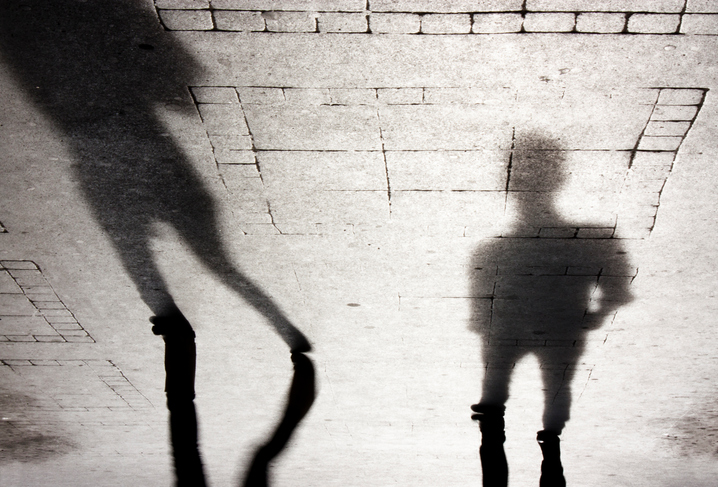 Abuse is a misuse of power intended to harm or control another person. The maltreatment can be physical, verbal, or emotional. All types of abuse can cause pain and psychological distress.
Abuse is a misuse of power intended to harm or control another person. The maltreatment can be physical, verbal, or emotional. All types of abuse can cause pain and psychological distress.
Abuse can leave psychological wounds that are harder to heal than bodily injuries. Survivors of abuse may have intense, negative feelings long after the abuse has ended. Anxiety, flashbacks, and trust issues are common in people who have experienced abuse. Abuse can impact a person’s ability to form relationships and find happiness.
Yet the effects of abuse do not have to be permanent. A therapist can help abuse survivors overcome challenges and address symptoms. Therapy can also help those who engage in abuse to stop harmful behaviors, though the individual must truly wish to change.
- Types of Abuse
- The Psychological Effects of Abuse
- Effects of Child Abuse
- Why People Abuse
- Resources for People Experiencing Abuse
Types of Abuse
There are many types of abuse. Abuse can be classified by its form or by its context.
Forms of abuse include:
- Physical Abuse: When someone deliberately causes physical harm to another. This type could include behaviors such as punching or whipping. It also includes actions which cause illness or disability, such as poisoning.
- Sexual Abuse: Any form of sexual contact made without consent. This type may include rape, child molestation, incest, or other acts of sexual violence.
- Emotional/Psychological Abuse: A chronic pattern of manipulation to control another person. Tactics include verbal attacks, isolation, humiliation, or threats. A person may also use gaslighting to make a target doubt their memories.
- Financial Abuse: When someone uses money to gain control over a person. They may take over one’s bank account or steal one’s identity to rack up debt. Selling or taking one’s property without permission also counts as abuse.
Abuse can occur within any kind of relationship, whether familial, professional, or social. It can also occur between strangers, although this pattern tends to be rarer. Common contexts are:
- Domestic Abuse: Also called intimate partner violence or spousal abuse. Any form of abuse which occurs in an intimate relationship counts as domestic abuse. The relationship can be straight, homosexual, monogamous, polyamorous, and so on. In the United States (U.S.), an average of 20,000 phone calls are placed to domestic violence hotlines each day.
- Elder Abuse: When someone harms, exploits, or neglects an elderly person. The abuser is often someone in charge of the elder’s care, such as a family member or nursing home worker. In the U.S., roughly 1 in 10 Americans over age 60 have experienced elder abuse.
- Child Abuse: When someone harms, exploits, or neglects a minor under 18. Estimates say one in four American kids have experienced neglect or abuse at some point.
- Ritual Abuse: When systemic maltreatment occurs as part of a ritual. In the 1980s and 1990s, there were widespread accusations of Satanic cults abusing American children. Most of these cases were disproven. There are records of ritual abuse occurring among cults such as the Branch Davidians. Yet ritual abuse is not as common as popular culture would suggest.
A person can experience more than one type of abuse. For instance, someone who is psychologically abused may experience physical abuse at the same time. In fact, psychological abuse is often a precursor to physical violence.
The Psychological Effects of Abuse
Abuse in any form or context can harm an individual. Even after the abuse has stopped, survivors can still experience distress. Abuse survivors have a higher risk of mental health concerns. They may experience one or more of the following issues:
- Anxiety: Survivors may be afraid of people or situations that remind them of their abuse experiences. They may be fearful of strangers, solitude, or sexual intimacy, depending on the nature of the abuse. Anxiety symptoms such as disrupted sleep or panic attacks are common in survivors of abuse.
- Anger: Survivors of abuse may feel intense anger at their abusers. They may resent bystanders who knew of the abuse and failed to intervene. They might even be mad at themselves for being abused, believing they could or should have stopped it. Anger is a natural response to being abused. Survivors can learn to manage their anger in a constructive manner that will promote healing.
- Depression: Feelings of sadness or emptiness are common among people who have experienced abuse. They may struggle to enjoy activities they used to like, especially if those activities remind them of the abuser.
- Dissociation: Numbness, confusion, and out-of-body experiences may occur during or after abuse. Dissociation can help the person avoid the pain and fear associated with abuse. In rare cases, memories of abuse may be repressed. Some survivors may not have any conscious memory of the abuse.
- Mood Issues: Irritability and mood swings affect many survivors of abuse.
- Posttraumatic Stress (PTSD): Nightmares, hypervigilance, flashbacks, and other symptoms of PTSD may occur. Survivors are likely to avoid certain settings and situations that remind them of the abuse.
- Shame: Survivors often experience guilt and shame. They may believe they deserved the abuse, were responsible for it, or failed to stop it. Challenging these beliefs in therapy can help survivors of abuse transform these feelings.
- Self-Destructive Behavior: Self-destructive behavior can take many forms. Some survivors will self-medicate with drugs or alcohol. Others might engage in self-harm, such as burning or cutting themselves. People may neglect their personal hygiene or sabotage any potential for success. These behaviors often indicate low self-esteem.
- Trust Issues: Learning to trust others after abuse has occurred can be challenging. Someone who has experienced abuse may struggle with physical intimacy.
While abuse can lead to mental health concerns, not every case results in extreme distress. The severity of the consequences can depend on the situation. For instance, someone may feel differently about abuse from a parent and abuse from a stranger. Whether loved ones recognized or dismissed the abuse can have a large impact.
Demographic factors can also affect how someone responds to abuse. For example, someone during childhood is more likely to develop mental health concerns. Gender roles can influence how one responds to sexual abuse. Socioeconomic status may decide whether someone receives adequate treatment.
Effects of Child Abuse
In the U.S., Child Protective Services receives a report of abuse every ten seconds. According to state agencies, in 2014:
- 702,000 children experienced abuse or neglect.
- Among these children, 1,580 died.
- Over 70% of the children who died were under age two.
- 80% of these fatalities involved at least one parent as a perpetrator.
People who were abused as children are more likely to have psychological and legal concerns as adults.
- One study found 80% of 21-year-olds who had experienced child abuse met the criteria for a mental health diagnosis.
- Survivors of child abuse are 1.5 times more likely to abuse drugs in adulthood.
- Child abuse increases the likelihood of adult criminal behavior by 28%.
- A U.S. Department of Justice study in 1999 found prison inmates were twice as likely to have been abused as children as the general public.
Child abuse can create a ripple effect that touches every part of a child’s life. It can hinder a child’s academic performance and social skills. Missing developmental milestones can have a domino effect on a child’s well-being. A 2014 study showed child abuse can affect nerve growth in young brains. The impact of child abuse can last a lifetime.
Why People Abuse
Abuse is a choice. There are certain factors which can make a person more likely to abuse others. Yet these influences do not cause abuse. They merely explain the behavior.
Someone who engages in abuse often has power over their target. This power could be social status, physical strength, wealth, or another form of influence. Due to their relative power, an abuser may feel entitled to treat the other person how they wish.
 Some people abuse others to compensate for a lack of agency elsewhere in their lives. For instance, an adult who was fired from their job may lash out at their spouse to relieve stress. Low self-esteem and anger issues are common among abusers. They might try to control an individual to prevent the person from “abandoning” them.
Some people abuse others to compensate for a lack of agency elsewhere in their lives. For instance, an adult who was fired from their job may lash out at their spouse to relieve stress. Low self-esteem and anger issues are common among abusers. They might try to control an individual to prevent the person from “abandoning” them.
Mental health issues can also play a role in abuse. Narcissistic personality and antisocial personality are strong risk factors for abusive behavior. Depression or substance abuse are also common among abusers. Not everyone who has these conditions will abuse others, but the diagnoses are relatively common among abusers.
Yet the largest predictor of abusive behavior is whether the perpetrator was abused themselves. Someone who was mistreated as a child may mimic the abusive behaviors of their caregivers. Instead of learning to negotiate or share, a person may only know how to use force to get their way. Some abusers do not realize their behavior is unusual.
In some cases, a court may order an abusive person to get treatment. Therapy often works best if the person sincerely wishes to stop abusing others. A psychotherapist can help someone understand why they abuse and how to stop the behavior. Therapy is a confidential environment where people can get help without judgment.
Resources for People Experiencing Abuse
Therapy can help abuse survivors leave unhealthy relationships or recover from their experiences. However, sometimes an abusive situation evolves into a life-threatening emergency. If you or someone you know is in danger, please call 911 or your local law enforcement.
The following resources can also help people experiencing abuse:
- National Domestic Violence Hotline: 1-800-799-7233
- National Sexual Assault Hotline: 1-800-656-4673
- Childhelp National Child Abuse Hotline: 1-800-422-4453
References:
- Child abuse and neglect: Consequences. (2018, April 10). Centers for Disease Control and Prevention. Retrieved from https://www.cdc.gov/violenceprevention/childabuseandneglect/consequences.html
- Child abuse statistics & facts. (n.d.) Childhelp. Retrieved from https://www.childhelp.org/child-abuse-statistics
- Elder abuse facts. (n.d.) National Council on Aging. Retrieved from https://www.ncoa.org/public-policy-action/elder-justice/elder-abuse-facts
- Henning, Kris and Klesges, Lisa M. (2003, August). Prevalence and characteristics of psychological abuse reported by court-involved battered women. Journal of Interpersonal Violence, 18(8), 857-871. Retrieved from http://jiv.sagepub.com/content/18/8/857.full.pdf
- McRobbie, L. R. (2014, January 7). The real victims of satanic ritual abuse. Slate. Retrieved from http://www.slate.com/articles/health_and_science/medical_examiner/2014/01/fran_and_dan_keller_freed_two_of_the_last_victims_of_satanic_ritual_abuse.html
- Psychological abuse. (n.d.) National Coalition against Domestic Violence. Retrieved from http://www.ncadv.org/files/PsychologicalAbuse.pdf
- Rimer, S., & Verhovek, S. H. (1993, May 4). Growing up under Koresh: Cult children tell of abuses. The New York Times. Retrieved from http://www.nytimes.com/1993/05/04/us/growing-up-under-koresh-cult-children-tell-of-abuses.html?pagewanted=all
- Society for Research in Child Development. (2014, July 24). Maltreatment affects the way children’s genes are activated. ScienceDaily. Retrieved from www.sciencedaily.com/releases/2014/07/140724094207.htm
- Statistics. (n.d.) National Coalition Against Domestic Violence. Retrieved from https://www.ncoa.org/public-policy-action/elder-justice/elder-abuse-facts

